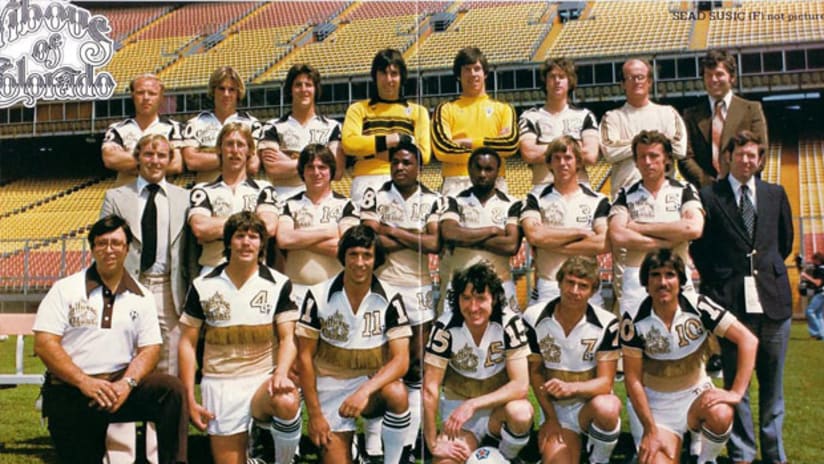Denver, Colorado is the center of the North American soccer universe this week, as most of MLS's main movers and shakers are in town for the MLS All-Star Game vs. Tottenham Hotspur (9 pm ET, FOX Sports 1, UniMás, TSN, RDS).
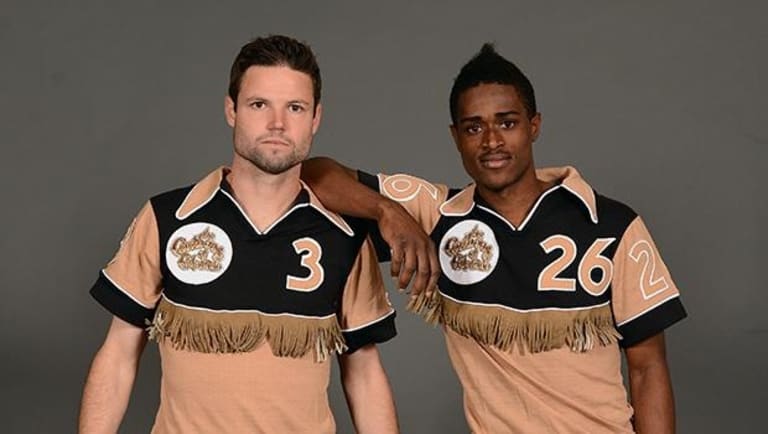
But it was a different story 37 years ago, when professional soccer made a brief, star-crossed cameo in the Mile High City – and in the process gave us one of the weirdest uniforms in sports history, one brought back to public attention by the Colorado Rapids' April Fools Day prank last year.
In 1978 the Caribous of Colorado set up shop in Denver as an expansion team in the North American Soccer League, looking to capitalize on the growing popularity of the sport – and the stardust sprinkled on the league by world superstars like Pele, George Best and Franz Beckenbauer.
Bankrolled by future Washington State governor Booth Gardner, the Caribous got their identity from Jim Guercio, a marketing wiz and music industry veteran talked into NASL by Lamar Hunt and charged with promoting the new team.
A few years prior, Guercio had founded Caribou Ranch, a recording studio in a remote barn in the Rocky Mountain foothills west of Denver where a range of 1970s hits were recorded, from Joe Walsh's “Rocky Mountain Way” to Elton John's “Captain Fantastic and the Brown Dirt Cowboy” and five of Chicago's albums. Guercio reckoned that Caribou's western-themed motif would make a decent brand for a soccer club, too – starting with the jerseys.
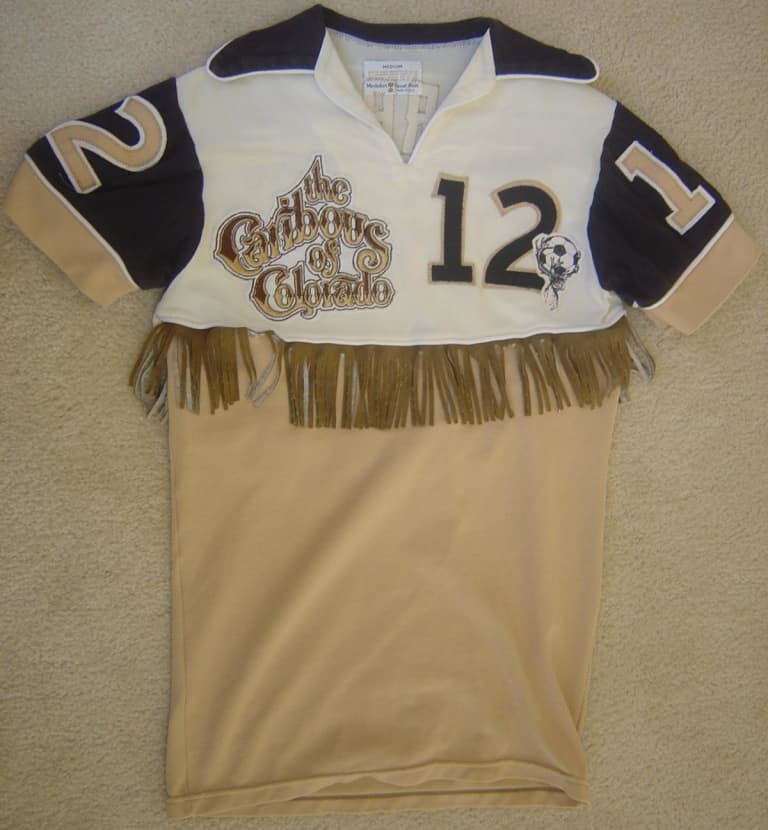
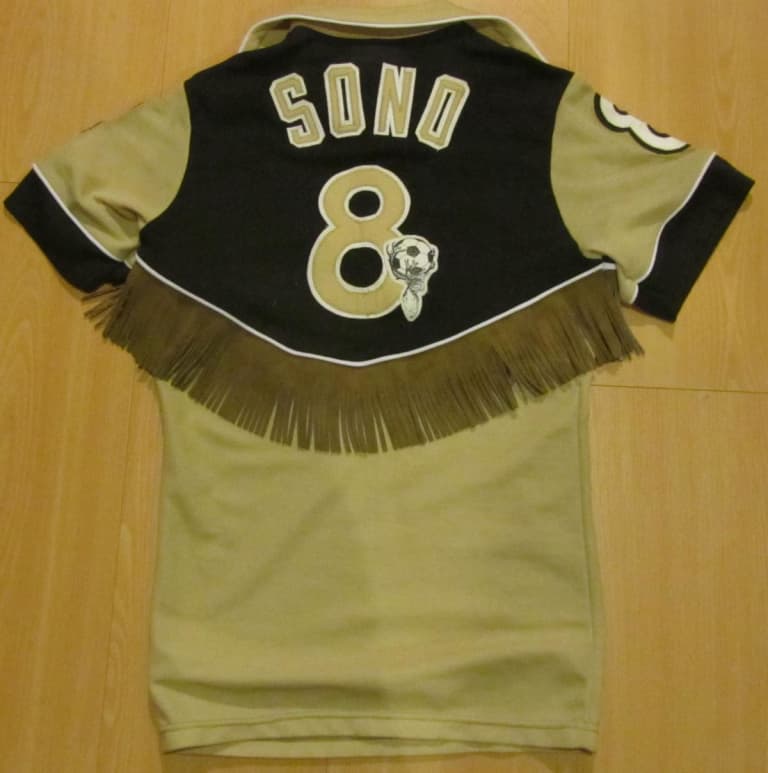
“It looked like a Roy Rogers 1940s shirt,” recalled Guercio in a conversation with MLSsoccer.com this week. “It had real long fringe on the arms and on the back, but the players would grab them and pull guys down, so we had to cut them an inch short. So there's a little midget fringe, but it's not the original fringe.”
*Images at right courtesy of NASLjerseys.com
Players and NASL officials took exception to his original design of the long faux-leather trim, which apparently became a weapon for both the wearers and their opponents – who could yank on it, but were also often whipped in the face when Caribous players splayed their arms and leaped for headers. So the fringe shrank to about two inches in length.
A promoter by nature, Guercio wanted to grab attention for the fledgling sport any way he could. So not only did the Caribous wear the fringed shirts, they were also given enormous matching cowboy hats to wear as they took the field for introductions.
“[In the original design] it was longer,” noted Guercio of the fringe. “In the back, it went down in a V on the real one – 10 inches, real long fringe. It was really cool-looking – and when they'd run on the field, they had Stetsons and fringe and everything. People were laughing their butts off.
“And it was a [graphic] designer, Gary Nichamin, who put the soccer ball in the caribou horns [logo] – I thought it was a beautiful job. He had designed all the Caribou Records press kits and programs.”
Pele had retired from the Cosmos the previous season, but he enjoyed visiting Colorado and was persuaded to bless the new team with an appearance on opening day.
“We arranged for Pele to ride out to the center circle with a cowboy hat on, riding a horse,” recalled Dan Wood, a Caribous assistant coach who was handed the top job in midseason after the firing of head coach Dave Clements.
“He was a good sport about it. That's the kind of gimmicks you had to do to get people to have a good time.”
Seeking to increase the attendance at their away games, the Caribous also placed ads in the newspapers of cities Colorado visited on road trips, mysteriously proclaiming “The Caribous Are Coming!” underneath an image of their trademark hat or jersey.
The cowboy kits, voted the worst uniform in soccer history in a landslide by Uni-Watch.com a few years ago, were not always popular among the players, who would struggle to an 8-22 record that season.
“They complained in the hot weather. But they understood that the Guercio half of the partnership was more into the marketing than Booth Gardner,” said Wood. “When the team went around and did sales things or clinics, [Guercio] made sure the players had their fancy uniforms with the cowboy hats and the fringe.”
Guercio made no secret of the fact that the shirts – paired with the skimpy shorts of the day – were meant to draw the fancy of the suburban soccer moms who brought their children to Caribous games at Mile High Stadium.
“We made it really affordable ... We had a lot of interface with the community,” he said. “The Caribou-ettes [cheerleaders] were soccer moms; we had sections in the stadium for dozens of [youth] teams.
“I had my guys doing schools and clinics all week. They loved it – they did more clinics than training.”
While the players took off their Stetsons for game action, the coaches were expected to keep them on.
“[During] my coaching duties, I was told to wear the big – it was more than a 10-gallon – hat made of a sort of felt leather,” said Wood. “So that was a little unusual for somebody to be sitting on the sideline at the old Meadowlands … wearing that in 85-degree weather, coaching against Giorgio Chinaglia and Franz Beckenbauer.”

Guercio claims the players – who were mostly Americans, in contrast to the NASL's import-heavy norm – eventually fell in love with the team's unique look.
“They loved it,” he said. “At first they said, 'What is this!?!' Some guy said, 'You know they can't wear those hats.' And I said, 'No, just when they come out on the field.' And those players – every [expletive] one of them took a hat. We never got one hat back. They were big Stetsons like Charlie Daniels [pictured at right].”
The Caribous finished in last place in their division in 1978. But their large continent of US national teamers – “You've got to have Americans,” said Guercio, “even if you're getting beat all the time, the audience would cheer for Americans” – made them a desirable commodity when the NASL passed a rule mandating that each club carry a minimum number of domestic players.
Media mogul and Atlanta Braves owner Ted Turner was eager to jump into pro soccer, so he made Gardner a sale offer too good to refuse – and suddenly the Caribous were headed to Georgia, soon to become the Atlanta Chiefs.
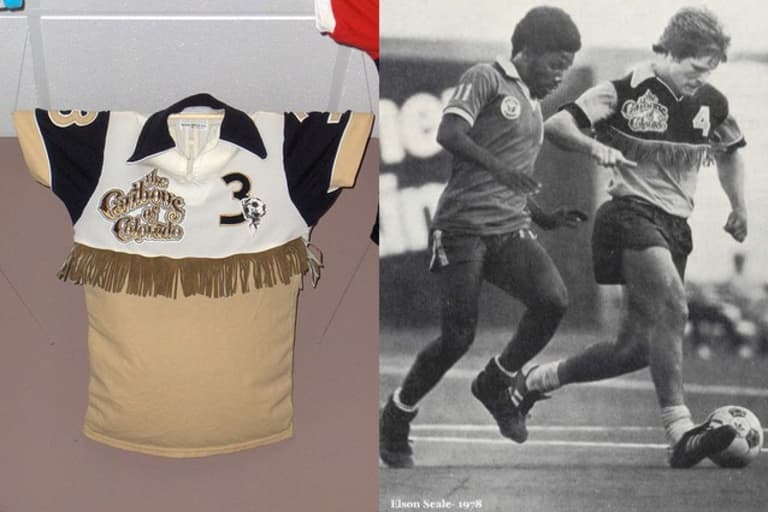
To this day, Guercio is convinced that his freewheeling marketing approach would have paid dividends if given more time. Even some four decades later, the frustration is evident when he describes how other NASL owners refused to follow his advice and give their games to television networks on the cheap, in order to gain maximum exposure to the sport so many Americans saw as newfangled.
“It was the only game a mother can practice with her young kids. And I knew that's what it was going to take to build a sport in America. And television could've done it. But I got outvoted and I was pretty discouraged,” he said. “It's going to take a huge capital commitment unless you can break through with media. I could only do so much.”
So in the end the Caribous proved a fleeting phenomenon, much like the NASL itself. But the vivid look of their western fringe still lives on – and when the Rapids paid it tongue-in-cheek tribute last year, they were inundated with requests from fans seeking to buy replicas of the gear.
Will the fringe be born again? We'll just have to wait and see.

